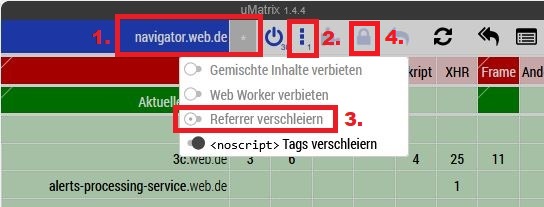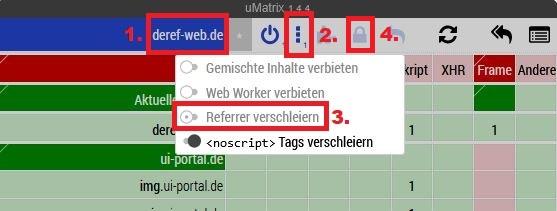Photo by Kyle Roxas: https://www.pexels.com/photo/crackers-cheese-and-fruits-2122278/
I use LineageOS on my OnePlus 8T. Sadly I still run it with Android 11 and LineageOS 18.1. Which is quite old in 2025. My plans to update the firmware and ROM got postponed again as non-surprisingly: I need my phone.
However one of the new year resolutions I choose is to finally update my mobile so I'm not lacking behind on Android security updates for several years. *ahem*
To de-google or to not de-google?
Along with this a long-standing idea surfaced again: I want to remove as many Google services as possible without having to give up needed tools/services.
Therefore, the first question regarding updating my mobile is: Do I still want to keep using the Google Apps? Or do I want to use another suite of alternative GApps that enhance privacy at the cost of some features? Or do I want to get rid of Google's apps altogether?
Depending on the choice, I can only use some (or all) Google Apps.
The rule of thumb is: The more functionality you need, the more you are paying with your data. The less privacy you have.
On a normal Android phone, the Google apps (YouTube, Maps, Wallet, etc.) are almost always pre-installed. Contrary custom ROMs often can't pre-install these, as a) Google doesn't allow this, and b) nowadays ROM developers know that users choose an alternative ROM to gain more control over their digital life and therefore explicitly want to disable some (or all) features related to Google's services and apps.
Alternative Google apps packages: The agony of choice
For this, several Google Apps packages exist. All vary in features and what they try to accomplish.
The big three in this field are:
MindTheGapps
Currently I am running LineageOS with MindTheGapps. Which is their current standard (LineageOS Wiki). MindTheGapps uses the proprietary Google services/packages. It just servers as an installer for the official Google packages. This means you can use the Google Play store, Google Maps, every method of authentication with Google Firebase (more relevant than you might think), and the SafetyNet (here is a good site with a presentation, whitepaper & lectures about SafetyNet - also known as DroidGuard) feature on which banking apps often rely. Among all other Google services.
The downside? Google happily leeching as much data from you as they do.
But helpful if you just want a custom ROM and no hassle with non-working apps.
MicroG
A viable alternative is MicroG. MicroG is, to quote the project itself, "A free-as-in-freedom re-implementation of Google’s proprietary Android user space apps and libraries." This means MicroG is a redevelopment to match the functionality while keeping privacy-harming features out. This also means that privacy-focused ROMs like CalyxOS include them and allow users to choose if they want to activate them.
There is an overview about the implementation status of each feature in the MicroG apps: https://github.com/microg/GmsCore/wiki/Implementation-Status. And it also serves as a good example: In MicroG, two Firebase authentication methods are currently not supported. This means if an app you use only uses these two methods, you won't be able to sign in. It's generally advisable to check your important apps if they work with MicroG or not.
The neat thing is that MicroG uses signature spoofing to present itself as the Google apps. Additionally, the long-standing issue with allowing signature spoofing in LineageOS has been fixed recently. This means that if MicroG is installed via F-Droid and the app package is signed with the signature from the MicroG development team, LineageOS allows MicroG to spoof the signatures. Which eliminates many long-standing issues.
The neat thing is: This allows us to simply install MicroG via F-Droid and be done with it. No more incorporating the MicroG image during the flash process.
Information about their F-Droid repository can be found here: https://microg.org/fdroid.html
Please, only install MicroG from their own repository. Don't install it from the PlayStore or other GitHub repositories. It's common to find Malware posing as the official MicroG package. One such example is documented in this Reddit-Thread: https://www.reddit.com/r/MicroG/comments/1icxc8h/malware/
And here is an interview with the MicroG developer about how it all came to be: https://community.e.foundation/t/microg-what-you-need-to-know-a-conversation-with-its-developer-marvin-wissfeld/22700
OpenGApps
Honestly, I still did know this project from when I first flashed my phone. And it was the first project I had a looked after. But sadly it seems that development is currently very slow.
The last news post is from August 23, 2019.
Android 11 is the last supported OS version, according to their homepage.
The last update in their SourceForge repository happened on May 3rd, 2022. Stating that support for Android 11 is, for most variants, still in the testing phase. According to their GitHub issues, some support for Android 12 should be there, but I didn't dig deeper into this.
In this GitHub issue, it's stated that they currently suffer from a lack of supporters/maintainers and have problems with their build server infrastructure, etc.
Therefore, I didn't look any deeper into this. If you want: Here is a link about what package contains which features: https://github.com/opengapps/opengapps/wiki/Advanced-Features-and-Options
Google Play store alternatives
Now that we have decided which package we want to use, we probably want to quit using the Google Play Store. After all, the more Google apps we replace, the less we are dependent on their services running on our phone.
Luckily, there are two app store alternatives that solve all our problems together.
F-Droid
F-Droid is the most commonly used alternative app store. It focuses on OpenSource software, rebuilding the .apk packages from the official repositories. Undesired features such as tracking, ads, or proprietary code are listed on the apps' site. However, due to hosting all files themselves and having a focus on privacy and OpenSource they have their own inclusion policy, which apps need to fulfill in order to be added to F-Droid. Hence, many commercial apps simply can't be added as they either directly use Google's Play services or other proprietary software to build their app. Or the company simply doesn't agree to being hosted on F-Droid.
This has the direct result that many popular apps will & can never be available on F-Droid. Which leads us to...
Aurora OSS
Aurora OSS is another Google Play store alternative. One that is even usable with and without Google services or even MicroG. As Aurora is directly accessing the Google Play store you can download all apps, even the ones you paid for - as long as you log in with your Google account.
For the rest. I recommend reading their project description: https://gitlab.com/AuroraOSS/AuroraStore. The "nicer" looking URL is https://auroraoss.com/; however, this is just to forward you to their GitLab project.
There is however a report that a freshly created Google account that solely used Aurora got deleted after just two hours: https://www.reddit.com/r/degoogle/comments/13td3iq/google_account_deleted_after_2_hours_of_aurora/ and https://news.ycombinator.com/item?id=36098970
But then again, this was the only big reporting on that matter. So I can't really tell what will happen to accounts which are also used for YouTube. Or that have paid apps in the Play store connected to their account.
This discussion on Reddit provides a little bit of insight as to why this could happen to an account.
Conclusion
Aurora combined with F-Droid means we have a solution to get any and all apps we need.
And even if you plan on flashing your Android device or not. Both app stores can be used on any phone. Allowing you to test them out prior to making any fundamental changes to your phone.
Side note: Vanishing developers
While doing my research for this article, I spent some time in the XDA developers forum, on GitHub, GitLab instances, and even SourceForge. And I noticed a constantly reoccurring pattern: many of the developers simply stopped being present in the last few years. No new posts in the XDA Developers forum. No activity on GitHub, etc.
Now it's not uncommon for OpenSource projects to lose contributors or even main project developers. After all, people do have a job, a family, a life. And somehow they need to earn money. Nothing surprising about that.
But I additionally noticed that many seem to be male and of Russian nationality. Given the fact that the Russian attack on Ukraine started in February 2022 and many developers went silent in the last 2-3 years, I have a bad feeling that many of them were conscripted into the Russian army.
Let's just hope that I am wrong...



